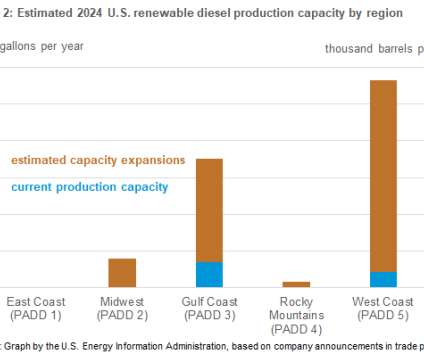EIA: US renewable diesel capacity expected to increase significantly through 2024
Green Car Congress
JULY 22, 2021
US production capacity for renewable diesel could increase significantly through 2024, based on announced projects and those that are under construction, according to the US Energy Information Administration (EIA). As of the end of 2020, we estimate US production capacity for renewable diesel totaled nearly 0.6

















Let's personalize your content